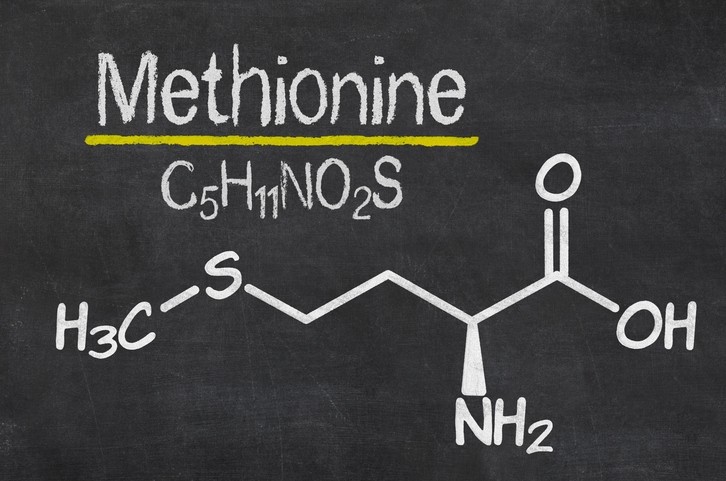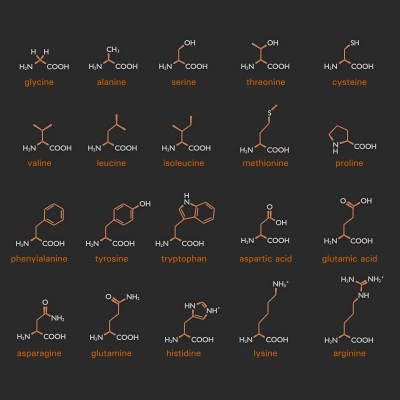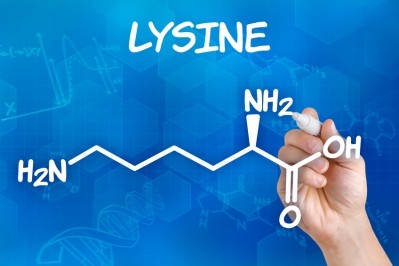Evonik says broiler trial ends 30-year debate on bioavailability of methionine sources

Emmanuel Auer, head of Evonik’s animal nutrition business line, said the findings were important for producers to bear that in mind if they want to optimize their feeds and make them as cost effective as possible.
Although DL-methionine products are used in the majority of poultry markets globally, around one third of producers use analogue products, which are mainly in the liquid free acid form (MHA-FA), he said.
“While these products (MHA-FA) may have an active content of 88%, research shows that far less of this content is biologically available – so producers need to be aware of that fact when they formulate their diets.”
The study, was conducted at Schothorst Feed Research in the Netherlands, showed the relative bioavailability of MHA-FA and DLM65 (MetAMINO diluted with starch to a Met content of 65%) compared to MetAMINO was 65% and 61% respectively. It demonstrated that the relative bioavailability of MHA-FA is significantly lower than its active content of 88%. It said the findings are consistent with the opinion of the European Food Safety Authority (EFSA), based on a meta-analysis of 46 dose-response studies from 27 peer-reviewed journals, confirming a RBA of 75% on equimolar basis, equivalent to 66% on product-to-product basis for liquid MHA-FA, it added.
The study performance data also confirmed that the improvements associated with MetAMINO, MH-FA and DLM65 all showed a plateau at the highest levels, where there were no significant differences between them, said Evonik.
“This highlights the fact that bioavailability could be incorrectly interpreted if it is based on data from this part of the dose-response curve,” said Auer. “As a result, multi-exponential regression analysis of dose-response study data is essential to determine bioavailability of Met and other nutrients, and this study confirms the validity of that methodology.”
Background
The authors of the study, which included an Evonik amino acid expert, noted various literature reviews have already reported a relative biological availability (RBA) of about 65% for liquid MHA-FA compared to DLM in broilers on product-to-product basis (Jansman et al., 2003; Sauer et al., 2008; Lemme et al., 2012). However, they stressed that data, based on modern broiler genetics, were lacking.
In summary, an Evonik spokesperson told FeedNavigator the research was carried out in order to:
- Prove the methodology applied by Evonik, including dose-response studies and multi-exponential regression analysis, is appropriate for determining bioefficacy, and
- Show the recent EFSA finding is also valid in terms of most recent broiler genetics.
The study
The study included 1,920 broilers that were fed starter, grower, and finisher diets with different methionine contents.
Each group of 120 birds was given MetAMINO, MHA-FA or DLM65 at five different levels (from 0.4 to 3.0g/kg).
A basal group of 120 was given no additional methionine. Growth performance was evaluated for each phase and carcass evaluation carried out on day 35.
The results showed that increasing levels of all three Met products (MetAMINO, MHA-FA and DLM65) was associated with improved growth performance and carcass yields compared to the basal diet.
The highest methionine supplement (3.0g/kg) improved body weight gain (BWG) by 70, 67 and 70% and reduced FCR by 22, 22 and 23% with MetAMINO, MHA-FA and DLM65 respectively. Similarly, carcass yield improved by 13, 11 and 13%, and breast meat yield, as a percentage of body weight by 62, 60 and 63%, with MetAMINO, MHA-FA and DLM65 respectively.
Further statistical analysis of the data showed that MHA-FA was only 58, 66 and 62% as efficacious as MetAMINO for BWG, FCR and European production efficiency factor (EPEF) respectively.
Source: Poultry Science Association 107th Annual Meeting Abstracts, #242
Title: Bioavailability of dl-methionine hydroxy analogue relative to dl-methionine and validation of the multi exponential regression approach by using 65%-diluted dl-methionine in broilers
Authors: V Naranjo, A Lemme, P Agostini, P van der Aar
Evonik Swine SID Compendium (2018)
Evonik says it has also launched a new standardized ileal digestibility (SID) database for swine feeds which – for the first time – provides SID values of all amino acid for weaners, as well as for grower pigs.
It said the new information means that feeds formulated specifically for weaners will no longer need to be based on digestibility data from growers – which should more closely meet requirement and result in enhanced performance, as well as reduced nitrogen excretion.
The Evonik Swine SID Compendium (2018) provides up-to-date SID coefficients for all essential and non-essential amino acids for different ingredients used in grower feeds, and those used in feeds for weaner pigs. The data is based on numerous scientific studies and publications, said the company.
The idea behind the database, said the company, is that a greater understanding of the digestibility of different amino acids at different ages could help producers to minimize the amount of nitrogen being released into the environment, and, in addition, reduce the amount of crude protein in the diet, and thereby reduce feed costs.
There are SID coefficients for the amino acid content of 73 ingredients used in feeds for growing pigs, including 10 cereals, 14 cereal byproducts, six pulses, six brewing and distilling products, 18 oilseeds and meals, 13 animal and milk byproducts, and six other feedstuffs. For weaned pigs there is data on 43 ingredients, including nine cereals and cereal byproducts, two pulses, two brewing and distilling products, 13 oilseeds and meals, 13 animal and milk byproducts, and four other feedstuffs.














